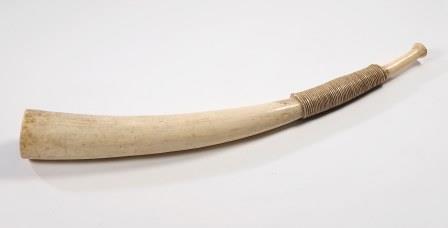Recommendation
In a letter dated 11 June 2007, the Minister for Education, Culture and Science (hereafter referred to as: ‘the Minister’) requested the Restitutions Committee to issue a recommendation regarding the application for restitution of seven ethnographic objects, which were returned to the Netherlands after the Second World War and are now part of the Netherlands Art Property Collection (hereafter referred to as: ‘the NK collection’) under inventory numbers NK 130, NK 133-A-B, NK 136, NK 137, NK 390, NK 396 and NK 3222. Four of the objects are currently housed in the depot of the Netherlands Institute for Cultural Heritage and three in the depot of the National Museum of Ethnology in Leiden.
